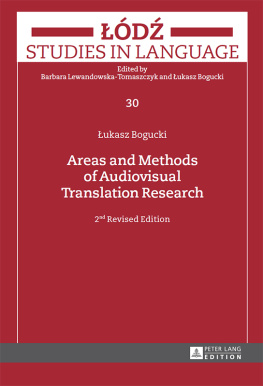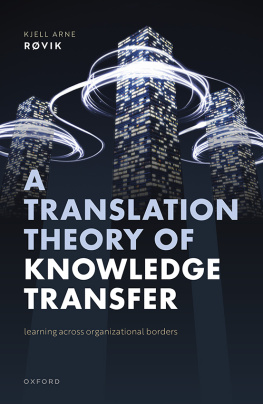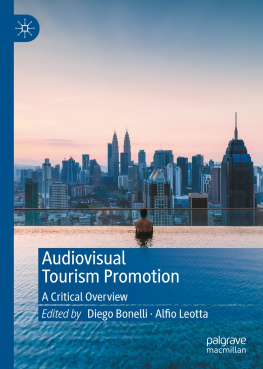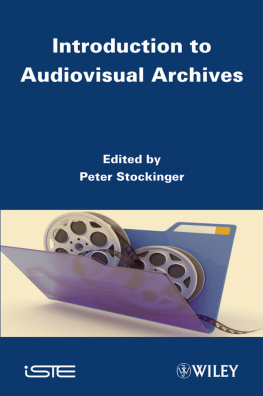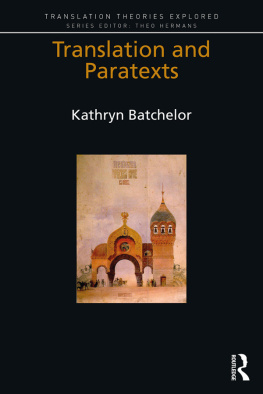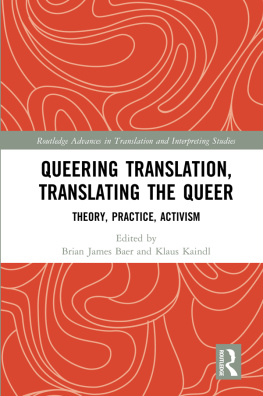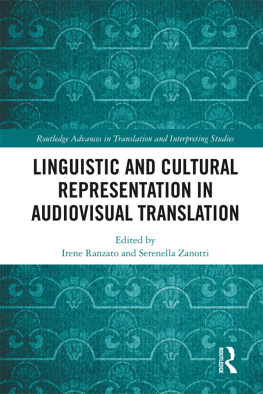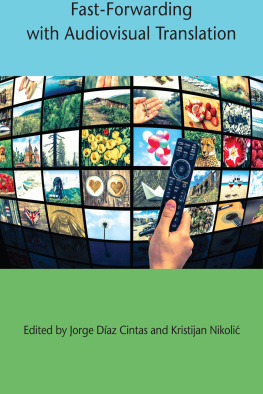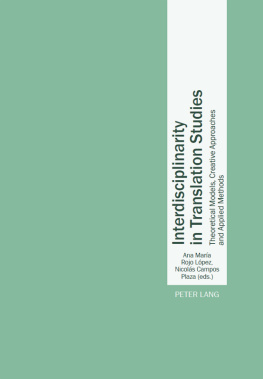Page List
D
STUDIES IN LANGUAGE
Edited by
Barbara Lewandowska-Tomaszczyk and ukasz Bogucki
Editorial Board
Piotr Cap (University of d, Poland)
Jorge Daz-Cintas (University College London, England)
Katarzyna Dziubalska-Koaczyk (Adam Mickiewicz University, Pozna, Poland)
Wolfgang Lrscher (Universitt Leipzig, Germany)
Anthony McEnery (Lancaster University, England)
John Newman (University of Alberta, Canada)
Hans Sauer (Ludwig-Maximilians-Universitt Mnchen, Germany)
Piotr Stalmaszczyk (University of d, Poland)
Elbieta Tabakowska (Jagiellonian University, Krakw, Poland)
Marcel Thelen (Zuyd University, Maastricht, The Netherlands)
Gideon Toury (Tel Aviv University, Israel)
Vol. 30

ukasz Bogucki
Areas and Methods of Audiovisual Translation Research
2nd Revised Edition

Bibliographic Information published by the Deutsche Nationalbibliothek
The Deutsche Nationalbibliothek lists this publication in the Deutsche Nationalbibliografie; detailed bibliographic data is available in the internet at http://dnb.d-nb.de.
Library of Congress Cataloging-in-Publication Data
Names: Bogucki, ukasz, author.
Title: Areas and methods of audiovisual translation research / ukasz Bogucki.
Description: Second Revised Edition. | Frankfurt am Main ; New York : Peter Lang, [2016] | Series: Lodz. Studies in language ; 30 | Revised Edition of: Second edition, 2013. | Includes bibliographical references and index.
Identifiers: LCCN 2015040629| ISBN 9783631661970 (Print) | ISBN 9783653058598
(E-Book)
Subjects: LCSH: Multimedia systems--Research. | Audio-visual equipmentTechnological innovations. | Translating and interpretingTechnological innovations.
Classification: LCC P306.93 .B64 2016 | DDC 418/.020208dc23 LC record available at http://lccn.loc.gov/2015040629
ISSN 1437-5281
ISBN 978-3-631-66197-0 (Print)
E-ISBN 978-3-653-05859-8 (E-Book)
DOI 10.3726/978-3-653-05859-8
Peter Lang GmbH
Internationaler Verlag der Wissenschaften
Frankfurt am Main 2013
2nd Revised Edition 2016
All rights reserved.
Peter Lang Edition is an Imprint of Peter Lang GmbH.
Peter Lang Frankfurt am Main Bern Bruxelles New York Oxford Warszawa Wien
All parts of this publication are protected by copyright. Any utilisation outside the strict limits of the copyright law, without the permission of the publisher, is forbidden and liable to prosecution. This applies in particular to reproductions, translations, microfilming, and storage and processing in electronic retrieval systems.
This publication has been peer reviewed.
www.peterlang.com
About the Author
ukasz Bogucki is Director of the Institute of English at d University (Poland). He is the author / editor of nine books and over thirty articles on translation theory, in particular audiovisual translation. His research interests also include interpreting studies and computer assisted translation.
About the Book
This little gem offers the reader an overview of the various practices that form part of the ever increasing field of audiovisual translation (AVT) and makes brave inroads into the less glamorous but definitely needed areas of theory and research. Covering a wide range of topics in research in AVT, and admittedly questioning whether a universal methodology for audiovisual translation research is feasible, this volume theorises about the nature of AVT, helps to frame some of the current trends, and points to potentially new research avenues. The style is reader friendly and to the point; a most welcome addition to translation studies.
Jorge Daz Cintas, University College London
This eBook can be cited
This edition of the eBook can be cited. To enable this we have marked the start and end of a page. In cases where a word straddles a page break, the marker is placed inside the word at exactly the same position as in the physical book. This means that occasionally a word might be bifurcated by this marker.
Table of Contents
8 8 | 9
Professor Barbara Lewandowska-Tomaszczyk and Professor Piotr Stalmaszczyk of the Institute of English at d University have been my mentors throughout my entire academic career; their constant encouragement and support as well as insightful ideas have been immensely helpful.
Thanks are also due to Dr Jorge Daz-Cintas (Imperial College London), Pablo Romero Fresco (Roehampton University), Dr Agnieszka Szarkowska (Warsaw University), Dr Agnieszka Chmiel (Adam Mickiewicz University) and Professor Stanisaw God-Roszkowski and Dr Mikoaj Deckert (d University) for helping to obtain research materials.
Professor David Pichaske (Southwest Minnesota State University) and Dr Paul Wilson (University of London and d University) kindly read the manuscript and provided useful feedback, while Micha Kornacki made sure that it was technically appropriate.
Those who are mentioned in the final paragraphs of acknowledgements usually sacrifice the most. I would like to thank my children Agata and Jakub for bearing with me and my constant lack of time during the months spent on this work. Lastly, thank you W for being there. 9 | 10 10 | 11
The genre of audiovisual translation is a prime example of the development and redefinition of translation studies in the 21st century. Practised for tens of centuries, translation achieved full academic recognition only a few decades ago (cf. Gentzler 1993; Venuti 2000; see also the diachronic perspective in chapter one). Even today, translation studies has yet to be considered an official academic discipline in many countries (see Bogucki 2015). The practice of translation is now undergoing an unparalleled period of constant, dynamic development. The acronym GILT (Globalisation, Internationalisation, Localisation, Translation - see e.g. Cronin 2003; Hatim and Munday 2004: 113) and the blend glocalisation (used predominantly in economy and sociology, e.g. Ritzer 2004, but also in translational contexts, e.g. House 2009: 80) indicate the current shifts in the nature of translating. The concept of automatising translation and impressive headway in computer technology have resulted in a proliferation of computer assisted translation tools, which are now sophisticated, multifunctional software packages that have revolutionised the translation process. Specialised software is also par for the course in translating audiovisual material, the focal point of the discussion in hand.
The current age is clearly a screen-dominated era. Blackboards and chalk, concomitant with most peoples late childhood, have now largely been superseded by interactive whiteboards. Closed-circuit television monitors the lives of townspeople. Ostensibly unambiguous words such as friend or like now require redefining to accommodate their Facebook senses. Giving film priority over literature, Zabalbeascoa (2010: 25) sarcastically remarks that writers are only really socially visible when they go on strike as script producers for Hollywood film and television. On the theoretical plane, OHalloran et al. (2010) note the necessary shift of interest from linguistic aspects of communication to models and theories rooted in social semiotics, taking into account multiple modes of communication.

